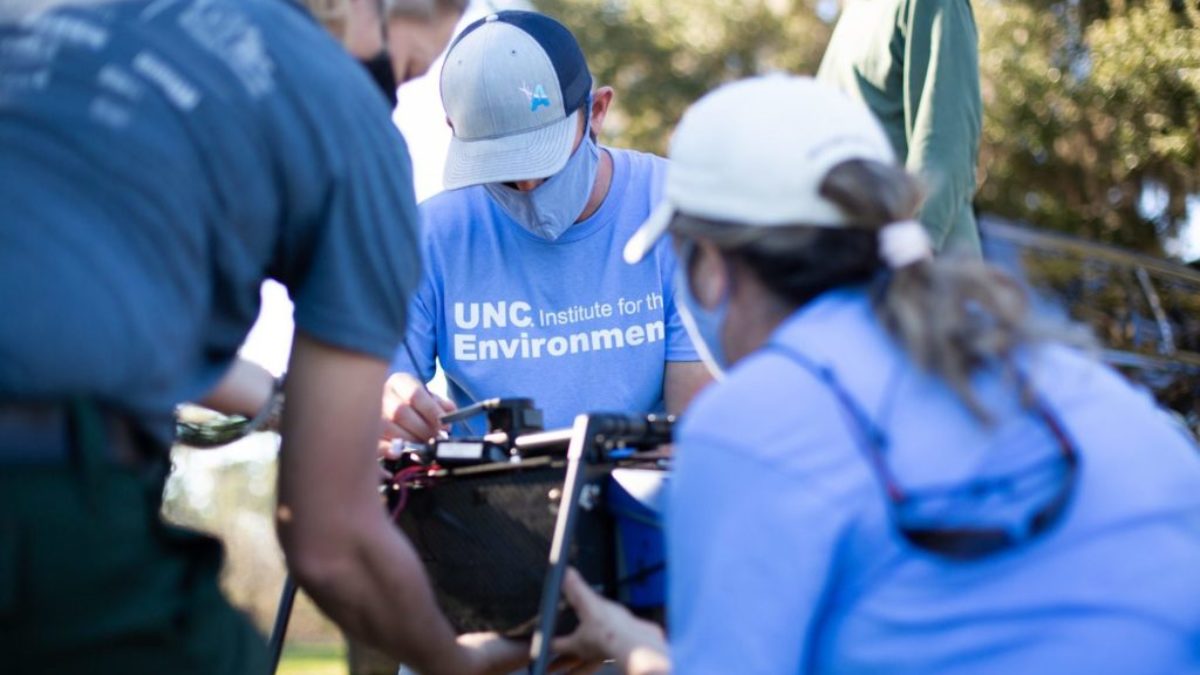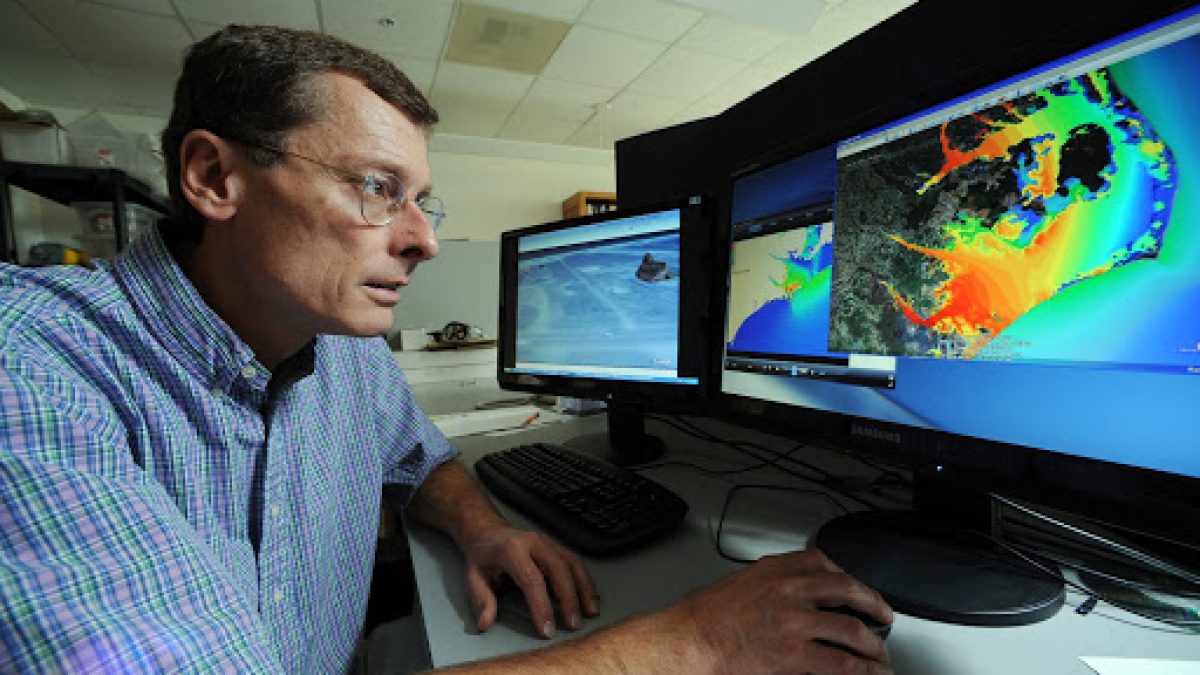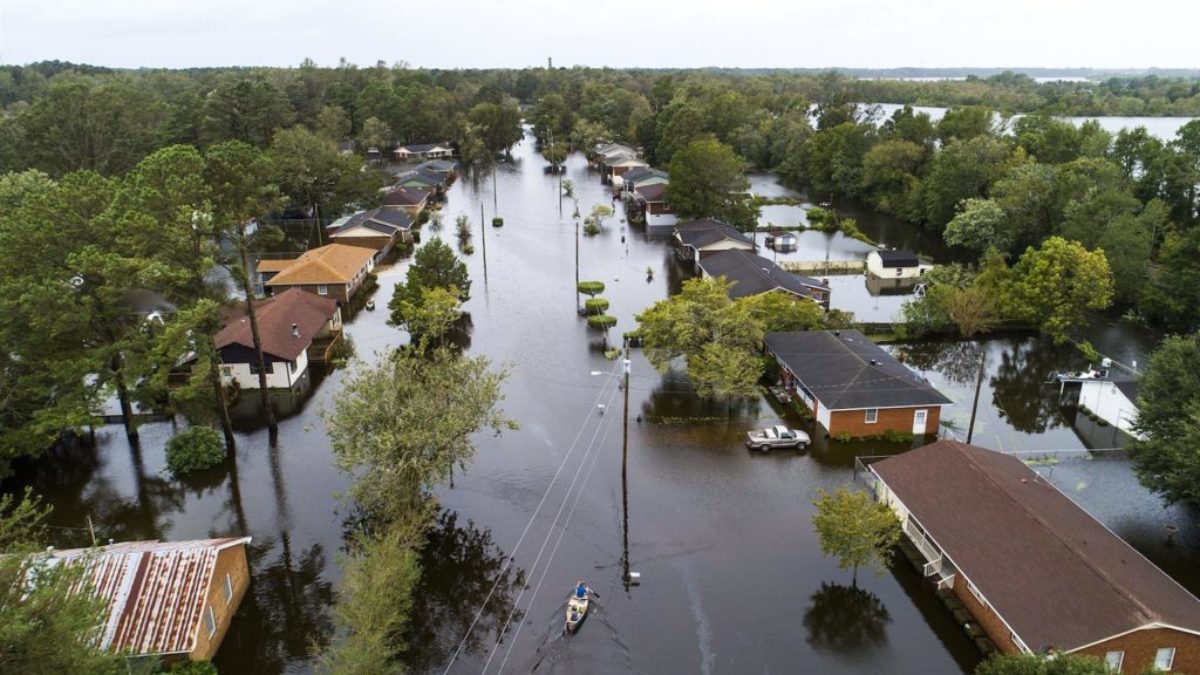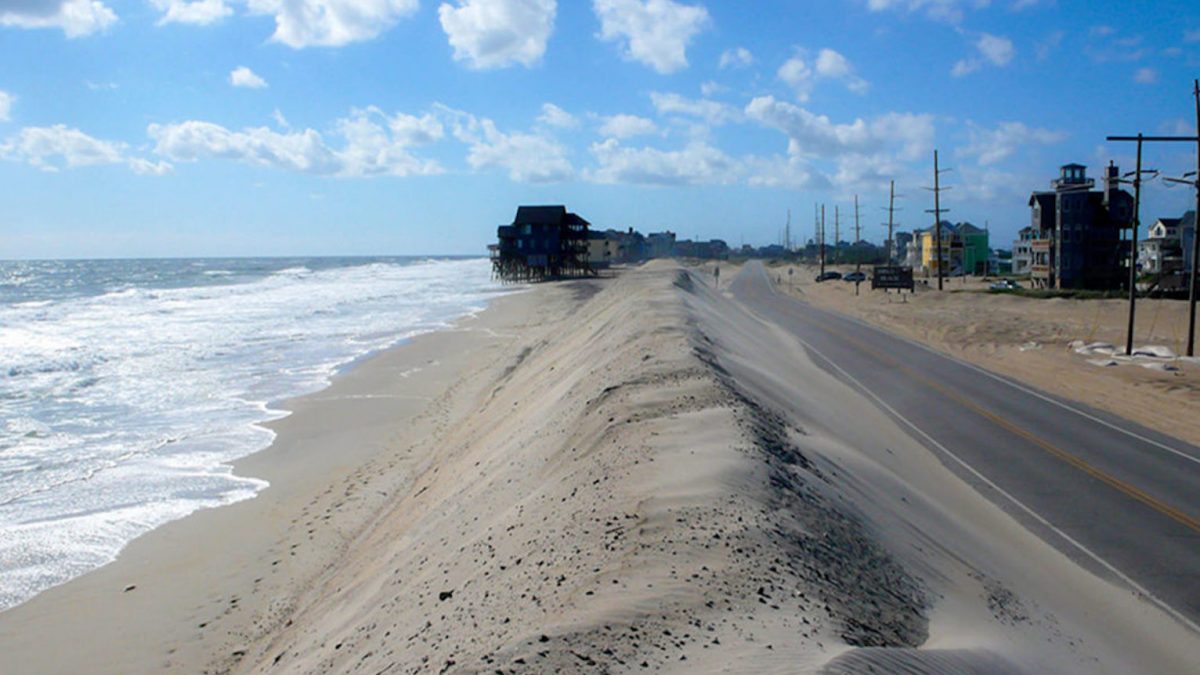Measuring Mitigation
Collaborating to see how wetland mitigation affects small mammals
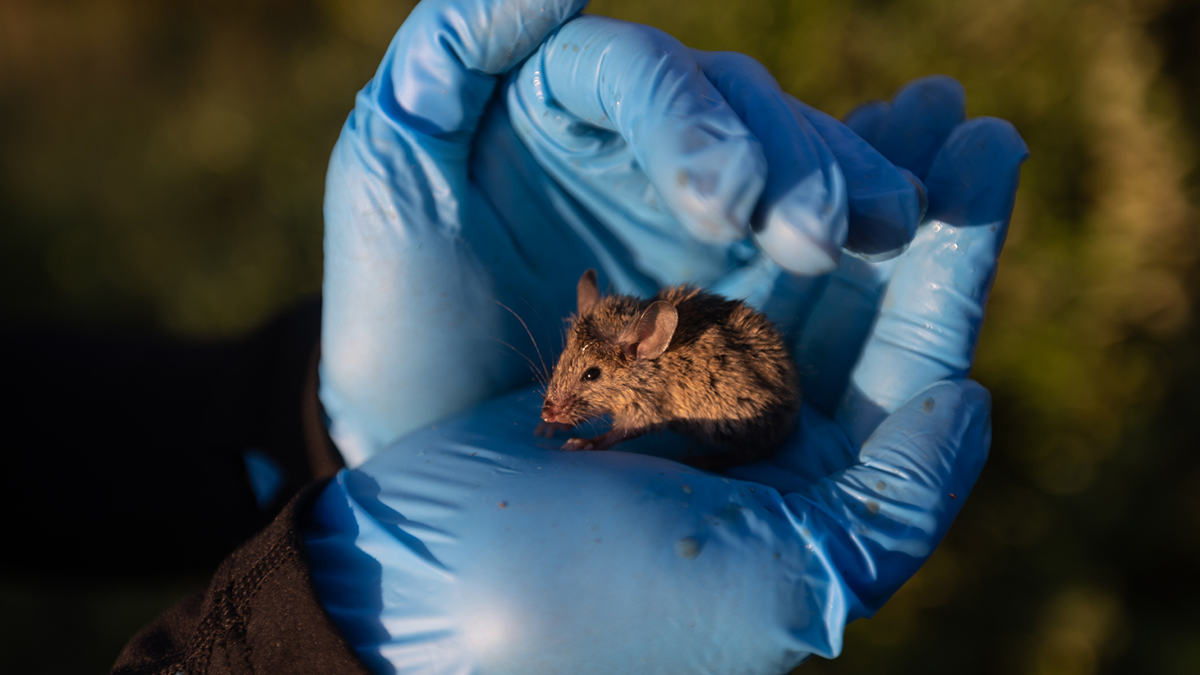
Collaborating to see how wetland mitigation affects small mammals
Vy Pham ‘23 picks up a foot-long metal box and holds it to her ear.
“I’m not sure if anything is in it,” the UNC-Chapel Hill senior says warily.
She holds it out in front of her, her headlamp illuminating its small trap door. As she pushes it in, she hears a squeak and sees two small eyes staring back at her.
“We got one!” she shouts triumphantly.
Pham is working with Rada Petric — a research assistant professor at the UNC Institute for the Environment — to track small mammals in the creek systems and wetlands in Julian.
The wetland is about to undergo mitigation — and researchers want to know how that will affect the ecosystem.
Farmland and pasture development has severely degraded these wetlands in Julian, and cattle have decimated the creek systems through nutrient consumption, defecation and urination. As water quality degrades, so does the rest of the ecosystem, creating a ripple effect that impacts not only small mammals but reptiles, amphibians, freshwater mollusks and insects.
Some of the efforts to rehabilitate this ecosystem include fencing off the creek and wetlands to prevent cattle from accessing them and lifting the creek, which currently has six- to eight-foot-high banks. This involves burying the old creek and creating a new path for it to flow through with excavators. Rocks are then added to the creek to create small waterfalls that oxidize the water and help local animals survive.
The eight-year project is a collaboration among Petric, professor and director of the UNC Highlands Field Site; Olivia Munzer, Western Piedmont habitat conservation coordinator for the North Carolina Wildlife Resources Commission; and Lindsey Zarecky, vice president of conservation and research at the Greensboro Science Center.
“This is a big, collaborative project with incredible women from various agencies,” Petric said. “Being part of a project that will make a positive impact on the region and all its inhabitants is a fantastic feeling.”

